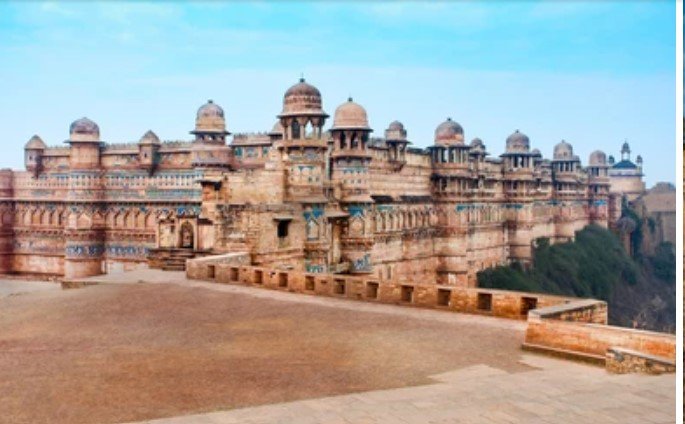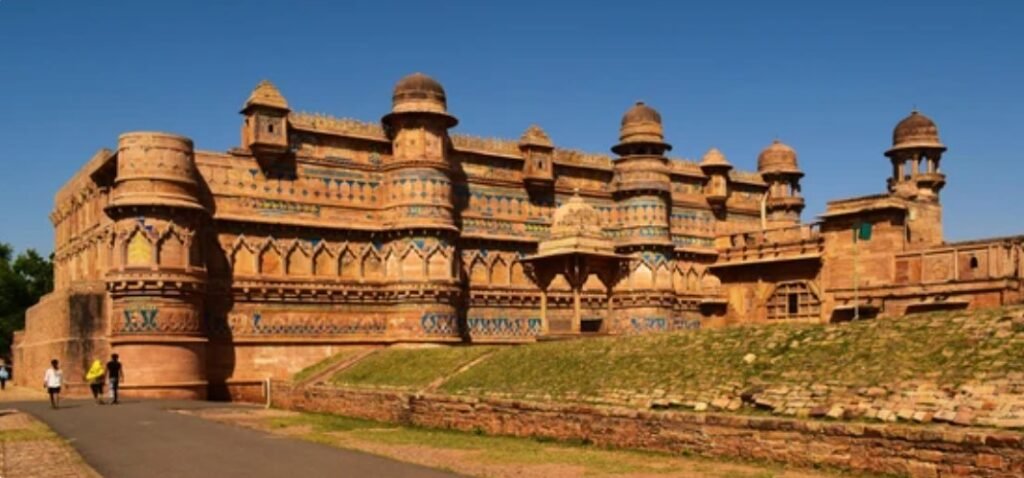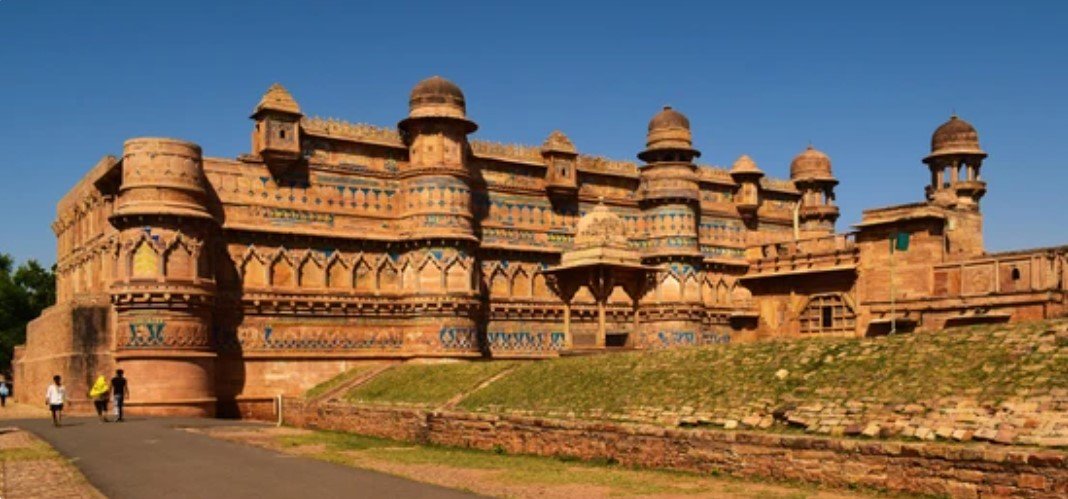Fort Gwalior happens to be one of the largest and oldest ever forts in India, mirroring all rich heritage and culture this country has to boast about. Coming under the state of Madhya Pradesh, this fort has silently watched umpteen numbers of historical events that scores of dynasties have found their home upon. Architectural brilliance; strategically fit site-these feature highlights define this majestic fort, better known as Gwalior Fort, standing to represent much more than a mere fort: a treasure to Indian history.
Overview and Historical Importance
It wears the sobriquet of “Gibraltar of India” with great pride, and that exactly means one thing-that it is as solid as it is vigilantly raised on a precipice. Standing in the backdrop of many momentous events during its existence, it silently saw the rise and fall of many an empire. A little over a thousand years of history forms its antiquity; hence, it is one of the oldest forts in India.
Gwalior fort was strategic. A place like this would mean natural protection and, therefore, a vantage point of a stronghold to any non-invasive occupant. The high walls of the fort steep uprise on the hill would have effectively caused it hence impregnable-a very important feature from the historical point of view.
It characterizes the aesthetic and cultural fusion brought in by a line of succeeding dynasties. Huge palaces and flawless carvings of its temples epitomize the brilliant artistry in Old Indian Architecture.
Special Features and Architecture:
It epitomes ultimate concerning the Hindu as well as Islamic architecture. Every inch is wonderfully done with carvings and craftwork. Laced with local sandstone, the color turned into golden which has altered over time during daytime as well as night time and has an enthralling effect .
Stories and Legends of Gwalior Fort
Needless to say, Gwalior Fort is not a silent structure that speaks only about history but says much about popular legends and folklores too. One of the most famous accounts narrates a story of Raja Man Singh Tomar and his Queen, Mrignayani, whose amour seems to be inscribed along the walls of the fort. Indeed, such stories give this already impressive fort a veneer of mystery thus making it even more interesting for the tourists visiting the place.

History of Gwalior Fort
The Early Dynasties
Fort at Gwalior was first built during the 6th century. Since then, it has passed on into the hands of various dynasties, which have made indentations on its architecture and history. Early history of the fort is indelibly linked to Pratiharas, a very powerful dynasty of the early medieval period .
Tomar Dynasty
Curiously, the golden period of the Tomar dynasty, with the tenure of Raja Man Singh Tomar, had raised many great architectural developments within the mighty fort. It is this period that has specifically seen the raising of the majestic plinth of the Man Mandir Palace.
Credit for making Gwalior Fort a great cultural and architectural spectacle goes largely to Raja Man Singh Tomar. History outlines the fact that it was Raja Man Singh Tomar who had made this venture of giving a totally new shape to this fort in his own dream and very few subjects at that historical juncture of time would have imagined what he was onto. The most significant feature of his monumental undertaking is, of course, the palaces and the temples.
Mughal
It was here that the very moment Tomar dynasty was thrown out the Gwalior Fort fell into the hands of the Mughals. Among his many favourite retreats this fort is one that was loved not only for aesthetic charm but the mighty Emperor Babur loved its strategic importance too. Thus the Mughals conducted many reconstructions in this fort along with various mosques and other Muslim architectural details.
The Maratha Period
Probably the most dynamic role in the latter history of the Gwalior Fort is that played by the Marathas under the Scindias. Later on, Gwalior became their capital, and many repairs and additions were made to the fort during the 18th and 19th centuries. Role of Scindia in Gwalior Fort
More correctly, it would be said that the Scindia dynasty under Maharaja Mahadji Scindia kept it in good repair and gave it such a strong position that it enjoyed in the politics of Central India, few periods of peace and prosperity lay under their regime, Gwalior Fort stood at the middlemost of this power.
British Era
It is believed that the continued structure changes, new barracks, and other administrative buildings were undergone by the British people after having military bases since the British colonial period in the Indian Rebellion of 1857, having been one of the strongholds of strategy and also beheld a lot of events.
Gwalior Fort in Contemporary India
Now, Gwalior Fort has become part of the attractions to which tourists come to India. Indeed, with proper care taken through Archaeological Survey of India, the fort stands so well preserved. Gwalior Fort remains an attraction to the visitors around the world who come to see the splendor hence learn very appropriately with delight.
Architectural Wonders Inside Gwalitor Fort
The Man Mandir Palace
Structures looking within the fort are the Man Mandir Palace built by Raja Man Singh Tomar. The palace has many architectural wonders right from tile work and jali screens down to colorfully executed murals. Above all, it stands as the great example of the artistic excellence of the dynasty ruled over the place.
Guajari Mahal
Of the two monuments of eminence in the fort, the other one is Gujari Mahal, that was built by Raja Man Singh Tomar for his queen Mrignayani. This site now serves as a museum, which displays a vast treasure of remains from various eras in Indian history in the form of sculptures, coins and inscriptions.
Sas Bahu Temples
In fact, Sas Bahu temples were inducted in few of the oldest temples located within the premises of Gwalior Fort and were built in devotion to Lord Vishnu. These come widely famous for their detailed carvings and classic architecture that depict the religious as well as cultural life of that time.
Teli Ka Mandir
It is towering and amongst one of the towering structures amidst the oldest ones that are a combination of various types of temples within Gwalior fort. Building construction and architectural representation are quite conflicting with each other apart from the other innumerable mixes grouped together. It is a mix of North Indian and Dravidian style in architectural presentation, nothing like it in the structure in the area of cluster.

Jain Sculptures
In the precincts of this fort lies the biggest and most magnificent group of rock-cut Jain sculptures in India. A host of carvings on the rock face with various Jain Tirthankaras stand as a testimony to religious tolerance and perfection of art during those times.
Cultural Significance of Gwalior Fort
Fairs and Festivals in Gwalior Fort
It is as alive a cultural hub as it is a historical monument. A spate of festivals and events are organized within its premises during the year, which includes the prestigeous Tansen Music Festival held in the memory of the legendary musician Tansen, who had association with Gwalior.
Gwalior Fort in Indian Art and Music
Gwalior fort bears a relation with Indian art and music quite innumerable times. Among them, being one of the big centers for the style of Dhrupad music is one of the well-known facts about this fort, which happens to be the great legendary musician Tansen. Even today, Gwalior is considered an important place when it comes to classic music.
Gwalior fort is considered one of the major known forts in India. It thus has the major role it can play in the tourist trade. Every year, several visitors come from within and outside India to see this fort. Hence, the economic state of the city progresses on a very good note. All these are fully maintained structures with a lot of history. It thus automatically makes the Gwalior Fort in A-list for any person showing interest in history associated with India.
Gwalior Fort
How to Reach Gwalior Fort
Highways and railways are fairly accessible without any problem to Gwalior Fort. The closest airport to this fort is Gwalior Airport. This airport gets good connectivity with other major cities of India. Gwalior Railway Station can also be reached quite easily from this fort, which is only a few kilometers away. Local transportation also includes taxis and auto rickshaws to go toward this place.
Starting in October, the best time to visit Gwalior Fort goes straight up to March. The weather remains just perfect during this period to go around the giant fort complex. During summers, it actually touches the boiling point high temperature, thereby making it really difficult to see all nooks and corners of the fort with satisfaction.
Important Visitor Tips
That means one big fort, and some good walking is bound to happen. Super-comfy shoes, water, and sun protection are highly recommended; it might get hot at that place during summer. Again, the option of hiring a guide is also available, and this would give an all-new dimension to this experience as guides share information about the historic background or even architectural knowledge related to the fort.




